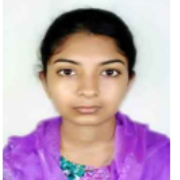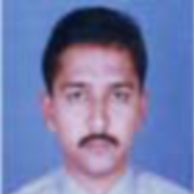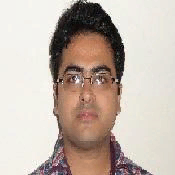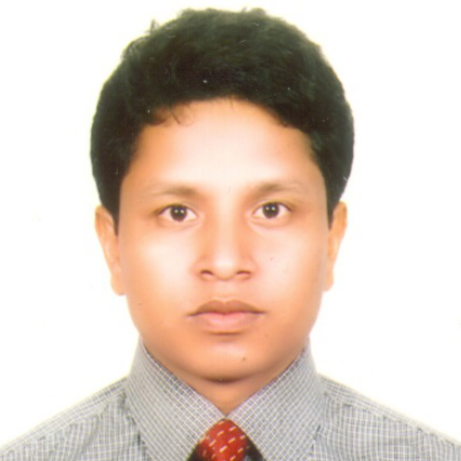International Journal of Information Technology and Computer Science (IJITCS)
IJITCS Vol. 5, No. 11, 8 Oct. 2013
Cover page and Table of Contents: PDF (size: 550KB)
One-bit Hard Combination Decision Scheme for Cooperative Spectrum Sensing in Cognitive Radio
Full Text (PDF, 550KB), PP.71-77
Views: 0 Downloads: 0
Author(s)
Index Terms
Cognitive Radio, Matched Filter Detection, Energy Detector Using Welch Periodogram, Cyclostationary Feature Detection, Cooperative spectrum, One-bit hard Combination
Abstract
The performance of one-bit hard combination decision scheme for cooperative spectrum sensing in cognitive radio has been studied in this paper. Energy detector model is used to observe the presence of primary user signal. Simulation result shows that the probability of missed detection is decreasing for both conventional hard combination and one-bit hard combination with OR rule according to the increasing of probability of false alarm. It also has demonstrated that one-bit hard combination decision scheme exhibits comparable performance with the conventional scheme and thus achieves a good tradeoff between performance and complexity.
Cite This Paper
Mohammed Mynuddin, Tania Khadem, Md. Ibrahim Abdullah, Md. Shamim Hossain, Mohammad Alamgir Hossain, "One-bit Hard Combination Decision Scheme for Cooperative Spectrum Sensing in Cognitive Radio", International Journal of Information Technology and Computer Science(IJITCS), vol.5, no.11, pp.71-77, 2013. DOI:10.5815/ijitcs.2013.11.08
Reference
[1]S. Haykin, “Cognitive Radio: Brain-Empowered Wireless Communications,” IEEE J. Selected Areas in Communications, vol. 23, no. 2, Feb. 2005, pp. 201-220.
[2]D. Cabric, S. M. Mishra, and R. W. Brodersen, “Implementation issues in spectrum sensing for cognitive radios,” in Proc. Asilomar Conf. on Signals, Systems, and Computers, Nov. 2004, vol. 1, pp. 772–776.
[3]H. Tang, "Some Physical Layer Issues of Wide-Band Cognitive Radio Systems," IEEE Int. Conf. Wireless Networks, Commun and Mobile Computing, pp.151-159, Nov.2005.
[4]G. Ganesan and Y. (G.) Li, “Cooperative spectrum sensing in cognitive radio–part I: two user networks”, IEEE Trans. Wireless Commun, vol.6, no.6, pp. 2204–2213, June 2007.
[5]G. Ganesan and Y. (G.) Li, “Cooperative spectrum sensing in cognitive radio part II: multiuser networks,” IEEE Trans. Wireless Comm., vol. 6, no. 6, pp. 2214–2222, Jun 2007.
[6]A. Ghasemi and E. S. Sousa, “Collaborative spectrum sensing for opportunistic access in fading environments,” in Proc. IEEE Int. Symp on New Frontiers in Dynamic Spectrum Access Networks, Nov. 2005, pp. 131–136.
[7]S. M. Mishra, A. Sahai, and R. W. Brodersen, “Cooperative sensing among cognitive radios,” in Proc. IEEE Int. Conf. on Commun., June 2006, vol. 4, pp. 1658–1663.
[8]Ghasemi A, Sousa E S, “Collaborative Spectrum Sensing for Opportunistic Access in Fading Environments”, Proceedings of DySPAN 2005. Baltimore, Maryland USA: IEEE Press, 2005: 131–136.
[9]Renzor M Di, Graziosi F, Sanyucci CI F, “Cooperative Spectrum Sensing in Cognitive Radio Networks over Correlated Log-Normal Shadowing”, Proceedings of VTC 2009-Spring. Barcelona, Spain: IEEE Press, 2009:1–5.
[10]Mishra S M, Sahai A, Brodersen Rw, “Cooperative Sensing among Cognitive Radios”, Proceedings of ICC’06. Istanbul, Turkey: IEEE Press, 2006: 1658–1663.
[11]N. Armi, N.M. Saad & M. Arshad, “Hard Decision Fusion based Cooperative Spectrum Sensing in Cognitive Radio System”, ITB J. ICT Vol. 3, No. 2, pp.109-122, 2009.
[12]H. Urkowitz, “Energy detection of unknown deterministic signals,” Proc. IEEE, vol. 55, pp. 523–531, Apr. 1967.
[13]F. F. Digham, M. -S. Alouini, and M. K. Simon, “On the energy detection of unknown signals over fading channels,” in Proc. IEEE Int. Conf. on Commun. May 2003, vol. 5, pp. 3575–3579.
[14]Ma, G. Zhao, and Y. Li, “Soft combination and detection for cooperative spectrum sensing in cognitive radio networks,” IEEE Trans. Wireless. Commun. vol. 7, no. 11, pp. 4502–4507, Nov. 2008.
[15]Li Jiajun, Tan Zhenhui, Ai Bo and Yang Shan, “Weighted Hard Combination for Cooperative Spectrum Sensing in Cognitive Radio Networks”, Research paper, pp. 111-116, 2011.
[16]J. Proakis, Digital Communications, 3rd edition, Mc Graw Hill W.A.Gardner, “Signal Interception: A Unifying Theoretical Framework for Feature Detection”, IEEE Trans. on Communications, vol. 36, no. 8. August 1988




